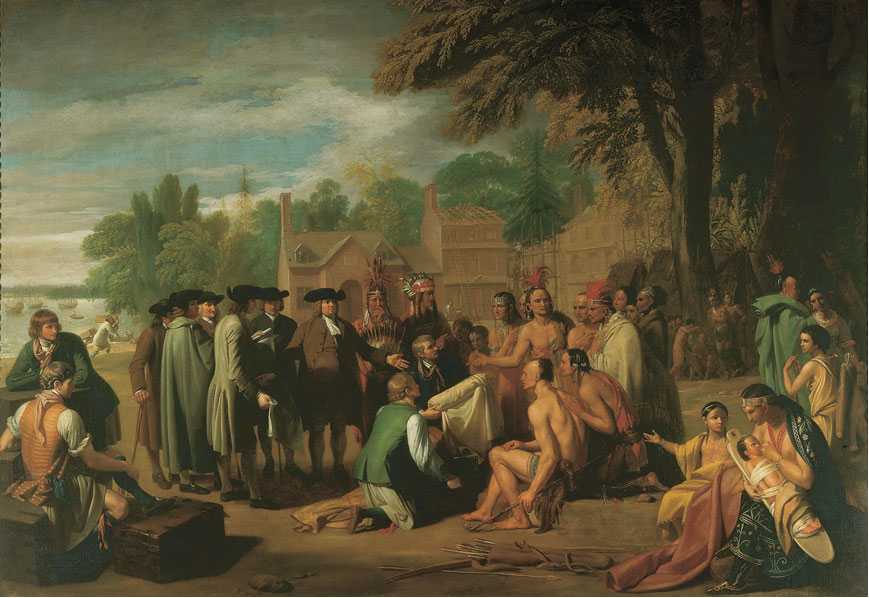Gradually it became clear that the English would dominate the entire coast between the St. Lawrence Valley and Florida. After 1660 only the Dutch challenged their monopoly. The two nations, once allies against Spain, had fallen out because of the fierce competition of their textile manufacturers and merchants. England’s efforts to bar Dutch merchant vessels from its colonial trade also brought the two countries into conflict in America. Charles II precipitated a showdown by granting his brother James, Duke of York, the entire area between Connecticut and Maryland. This was tantamount to declaring war. In 1664 English forces captured New Amsterdam without a fight—there were only 1,500 people in the town—and soon the rest of the Dutch settlements capitulated. New Amsterdam became New York. The duke did not interfere much with the way of life of the Dutch settlers, and they were quickly reconciled to English rule. New York had no local assembly until the 1680s, but there had been no such body under the Dutch either.
In 1664, even before the capture of New Amsterdam, the Duke of York gave New Jersey, the region between the Hudson and the Delaware, to John, Lord Berkeley, and Sir George Carteret. To attract settlers, these proprietors offered land on easy terms and established freedom of religion and a democratic system of local government. A considerable number of puritans from New England and Long Island moved to the new province.
In 1674 Berkeley sold his interest in New Jersey to two Quakers. Quakers believed that they could communicate directly with their Maker; their religion required neither ritual nor ministers. Originally a sect emotional to the point of fanaticism, by the 1670s the Quakers had come to stress the doctrine of the Inner Light—the direct, mystical experience of religious truth—which they believed possible for all persons. They were at once humble and fiercely proud, pacifistic yet unwilling to bow before any person or to surrender their right to worship as they pleased. They distrusted the intellect in religious matters and, while ardent pros-elytizers of their own beliefs, they tolerated those of others cheerfully. When faced with opposition, they resorted to passive resistance, a tactic that embroiled them in grave difficulties in England and in most of the American colonies. In Massachusetts Bay, for example, four Quakers were executed when they refused either to conform to puritan ideas or to leave the colony.
The acquisition of New Jersey gave the Quakers a place where they could practice their religion in peace. The proprietors, in keeping with their principles, drafted an extremely liberal constitution for the colony, the Concessions and Agreements of 1677, which created an autonomous legislature and guaranteed settlers freedom of conscience, the right of trial by jury, and other civil rights.
The main Quaker effort at colonization came in the region immediately west of New Jersey, a fertile area belonging to William Penn, the son of a wealthy English admiral. Penn had early rejected a life of ease and had become a Quaker missionary. As a result, he was twice jailed. Yet he possessed qualities that enabled him to hold the respect and friendship of people who found his religious ideas abhorrent. From his father, Penn had inherited a claim to ?16,000 that the admiral had lent Charles II. The king, reluctant to part with that much cash, paid off the debt in 1681 by giving Penn the region north of Maryland and

Historian James Merrell notes several errors in Benjamin West's famous 1771 painting, William Penn's Treaty with the Indians. In 1682, when the treaty was negotiated, Penn (in brown coat) was not yet so fat; the colonists' clothing and brick buildings resemble a scene in Philadelphia in the 1750s, not the 1680s; and the Indians are implausibly posed like Greek and Roman statues. Most important, the painting includes no translator, the one indispensable figure in the proceedings. All Indian and settler exchanges required "go-betweens” or "negotiators” to help each group explain itself to the other.
West of the Delaware River, insisting only that it be named Pennsylvania, in honor of the admiral. In 1682 Penn founded Philadelphia. The Duke of York then added Delaware, the region between Maryland and the Delaware Bay, to Penn’s holdings.
William Penn considered his colony a “Holy Experiment.” He treated the Indians fairly, buying title to their lands and trying to protect them in their dealings with settlers and traders. Anyone who believed in “one Almighty and Eternal God” was entitled to freedom of worship. Penn’s political ideas were paternalistic rather than democratic; the assembly he established could only approve or reject laws proposed by the governor and council. But individual rights were as well protected in Pennsylvania as in New Jersey.
Penn’s altruism, however, did not prevent him from taking excellent care of his own interests. He sold both large and small tracts of land to settlers on easy terms but reserved huge tracts for himself. He promoted Pennsylvania tirelessly, writing glowing, although perfectly honest, descriptions of the colony, which were circulated widely in England and, in translation, in Europe. These attracted many settlers, including large numbers of Germans—the Pennsylvania “Dutch” (a corruption of Deutsch, meaning “German”).
William Penn was neither a doctrinaire nor an ivory tower philosopher. He came to Pennsylvania himself when trouble developed between settlers and his representatives and agreed to adjustments in his first Frame of Government when he realized that local conditions demonstrated the need for change. His combination of toughness, liberality, and good salesmanship helped the colony to prosper and grow rapidly. Of course the presence of well-settled colonies on all sides and the richness of the soil had much to do with this happy state of affairs. By 1685 there were almost 9,000 settlers in Pennsylvania, and by 1700 twice that number, a heartening contrast to the early history of Virginia and Plymouth. Pennsylvania produced wheat, corn, rye, and other crops in abundance and found a ready market for its surpluses on the sugar plantations of the West Indies.




 World History
World History









